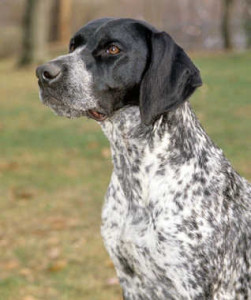
Alzheimer’s disease is one of the cruelest illnesses our beloved senior citizens have to endure. Its symptoms are very much like cognitive dysfunction syndrome (CDS) in dogs. Characterized by cognitive decline, unusual behavioral changes and degeneration, CDS happens in senior dogs as early as seven years—although most pet owners don’t recognize it until the dog reaches 10 years or older.
Ideally, to test for CDS, an older dog should undergo a test called 3-DNMP or three-component delayed non-matched to position task. Sounds expensive? It’s quite uncommon, too. In lieu of this test, we pet owners can only rely on telltale signs in to determine if our senior dogs are suffering from CDS. Such symptoms include disorientation, altered interaction with people or other pets, sleep-wake cycle alterations, and a lower energy level. If you notice these signs in your old buddy, this doesn’t mean that your dog is automatically suffering from CDS. Self-diagnosis can only go so far; you need to go to a veterinarian to seek expert opinion.
If you’ve just confirmed that your old buddy is suffering from CDS, don’t despair just yet: there are available treatments for you fur buddy.
Dietary intervention is a good way to reduce CDS symptoms. You will also have to give supplements, such as Vitamins E, C, and E. Also give your old buddy L-Carnitine, Alpha-lipoic acid, and other natural antioxidants found in fruits and vegetables.
Another method to reduce CDS symptoms is by turning to behavioral enrichment. There are studies that suggest that behavioral enrichment is just as effective as dietary intervention. A few examples include more exercise, providing different toys or a kennel mate for environmental enrichment, and having your buddy undergo cognitive enrichment.
There are several methods, but what is the most effective, exactly?
Caring for an older dog with CDS
All these things are helpful for dogs with CDS, but what researchers discovered was that the combination treatment group – the one that received both dietary and behavioral interventions – consistently demonstrated greater benefit than groups receiving a sole treatment. Prior reports indicated that the “3-DNMP” task was too difficult for aged animals, yet this study showed aged dogs making fewer errors and responding more slowly (actually a good sign!) on these complex tasks.
“I think that, as in humans, if you don’t use it, you lose it,” says Dr. Wynn. “Some older dogs are left at home with nothing to do but dwell on their anxieties – the gradual loss of hearing and sight, increasing stiffness and pain. I really think they dwell on these changes unless they are given other things to do and to think about, and are provided with adequate pain control. So we should manage their pain very aggressively with acupuncture, massage, herbs, chiropractic, physical therapy, and drugs, and provide them with small projects, or if possible, keep them in training. Training and exercise should never stop.” (Read more here)
You also have the choice of nutraceuticals or pharmaceuticals, some of which are specifically for treatment of canine CDS, while others are also used for Alzheimer’s in humans.
Whatever your choice of treatment for your fur buddy’s CDS, one thing’s for sure: have faith that your old buddy will get well. Caring for an older dog with CDS is quite difficult, but your love for your beloved pet should beat the odds. Soon enough, and if you follow any of the methods previously mentioned, things will get better!
Leave a Reply